TL;DR
It's Dangerous to Ghost Alone is a video game concept created as an exploration into cooperative gaming in which you can't see or directly interact with the other player for the majority of the game. This blind cooperation both emphasizes the separation of the players while at the same time making any amount of connection and communication all the more significant. I approached this challenge by designing the visuals, primary game mechanics, a few specific sequences, and the broader setting and story of the game.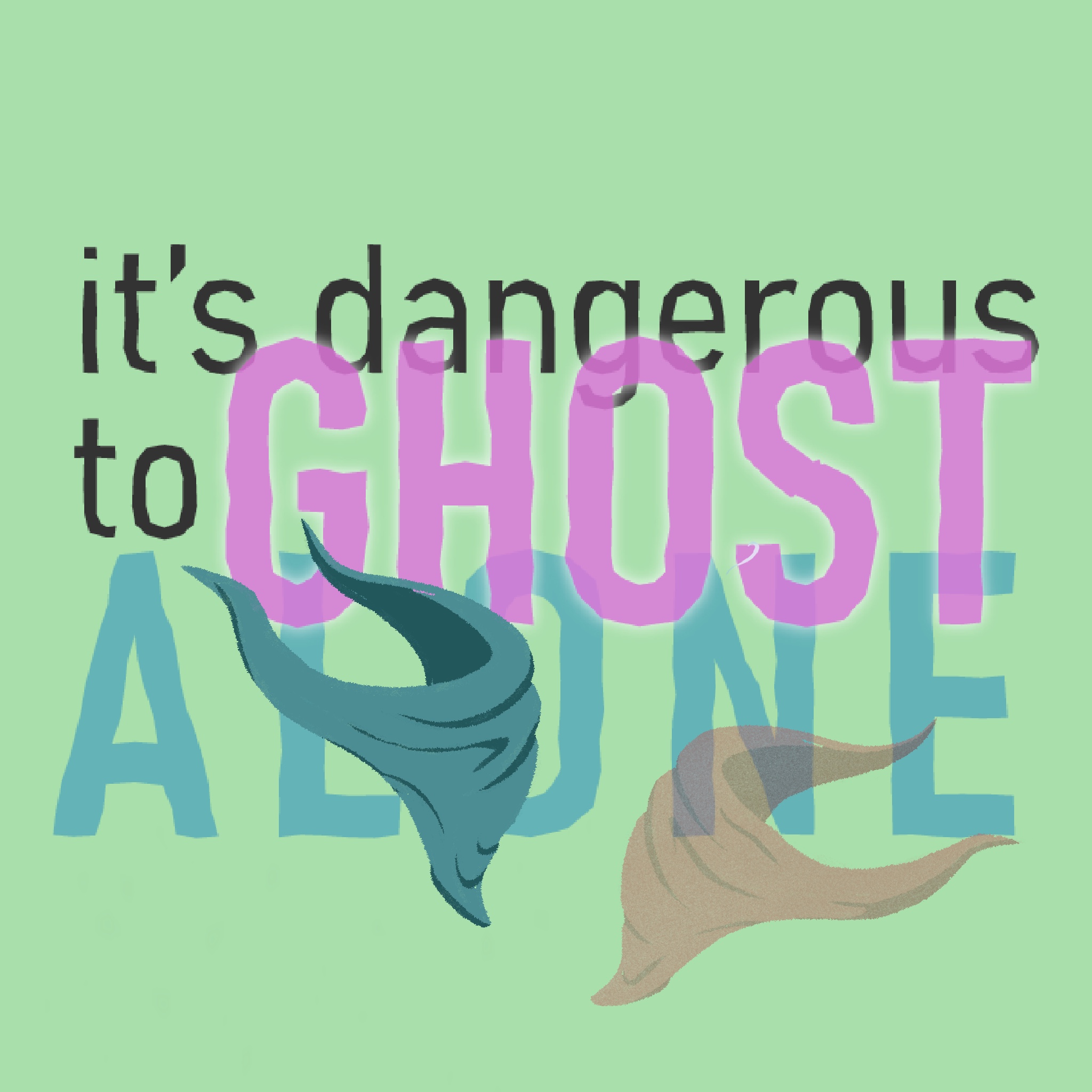
Details
The Story
Prota was a brave adventurer, who was on a noble quest to save the princess Prin from her tower, where she has spent the majority of her life. After boldly slaying everything that crossed her path, Prota threw up a grappling hook and climbed up the tower to finally save the princess.Then Prota slipped and fell to her death.
Prin, having lived a sheltered tower life, goes into the world with a sense of optimism and a sword that she barely knows how to use, and Prota begrudgingly needs to change her methods to be more communicative and creative as she gets used to her new situation.
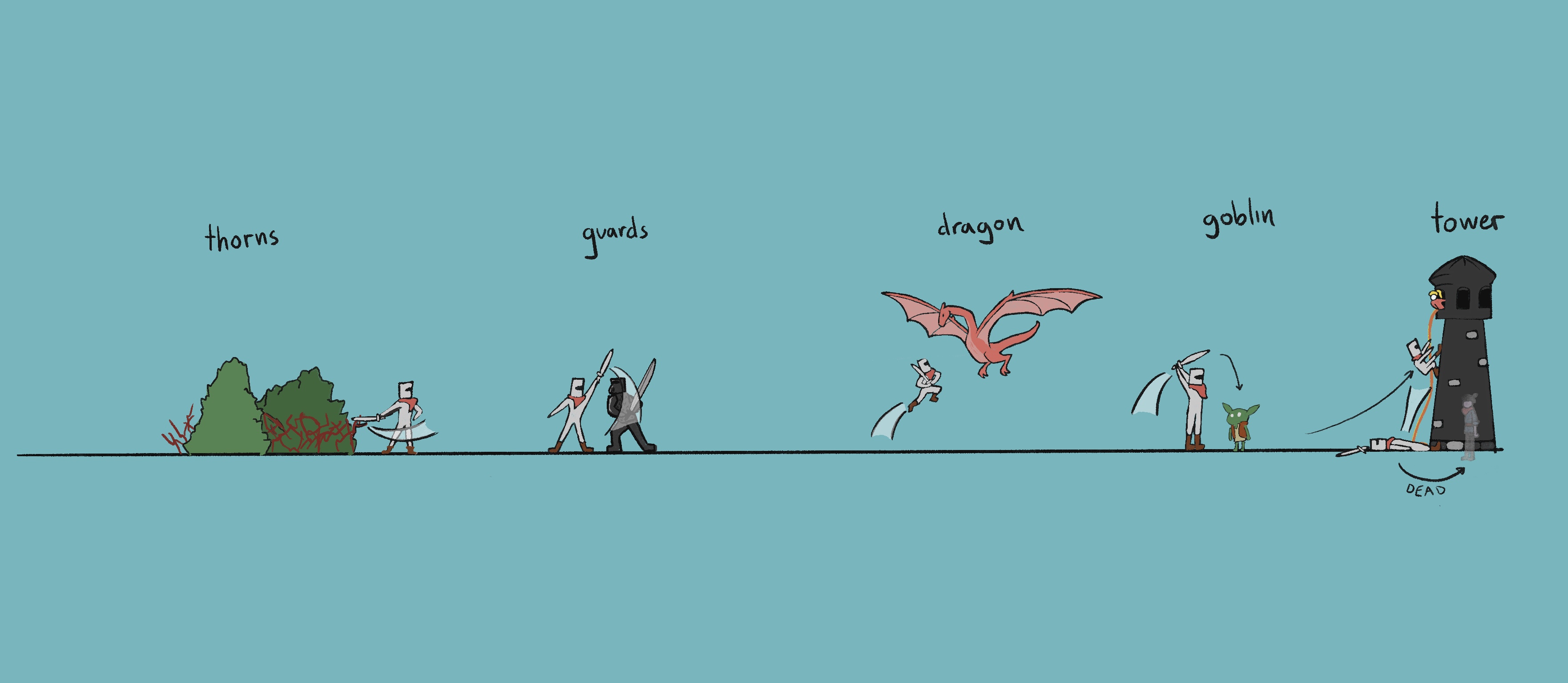
Storytelling through Cooperation
As an interaction design project, it's important to note how a single scenario can change depending upon which two people run through it. As a game design project, it was important to make sure that there were multiple ways to solve a puzzle.Allowing and striving for multiple solutions makes it so the players themselves are put into their characters' shoes, trying to find out how to communicate all on their own. Part of the story is pre-written, but the important part of the story is the relationship between the two main characters, Prota and Prin. That part is a unique experience.
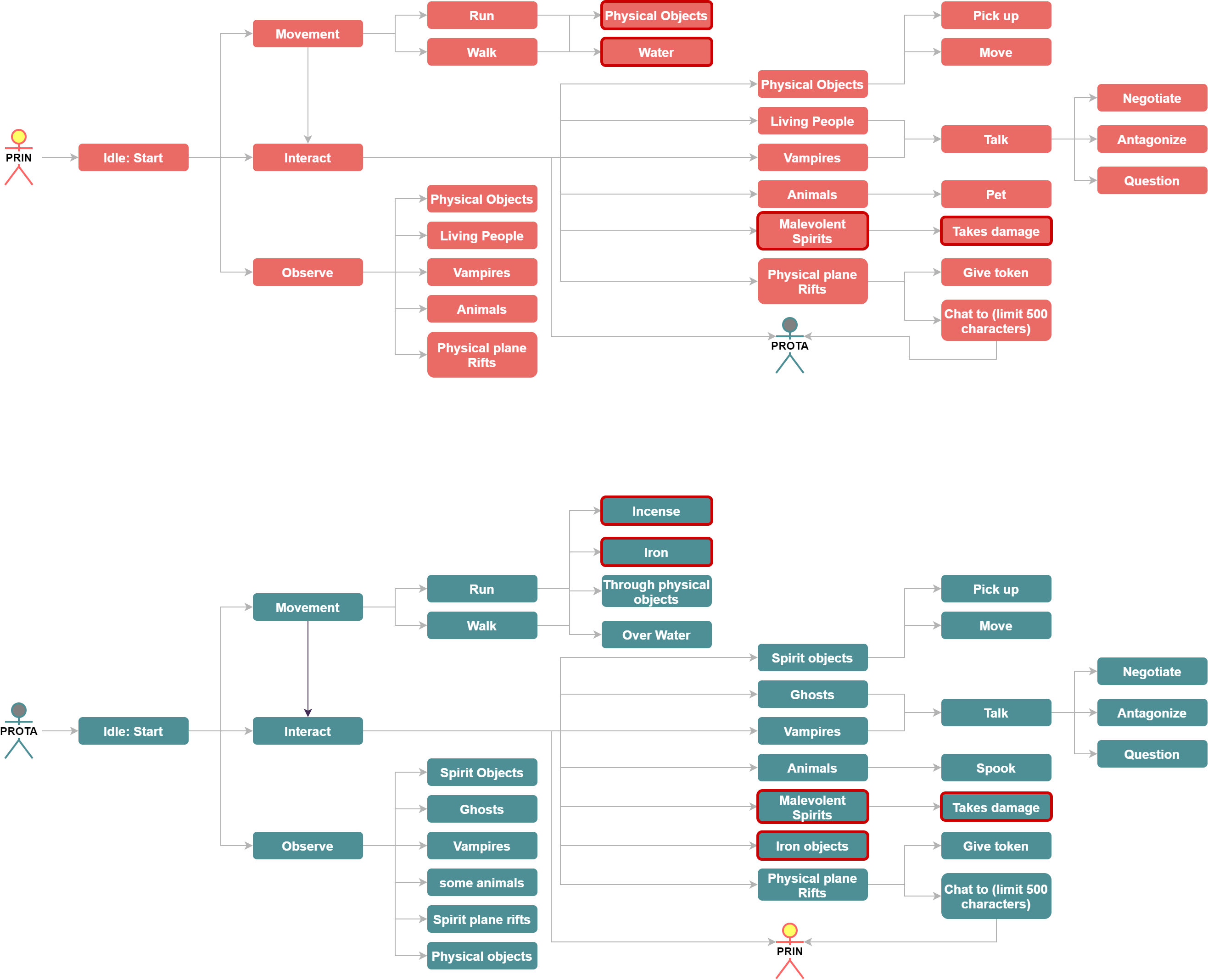
Gameplay
The main issue that I was tackling within this game was how the two characters, Prota and Prin, would be communicating to accomplish their goals. The basis for these methods is derived from common abilities of ghosts and spiritual mediums. There are three main methods that can be utilized to communicate:
- Environment Manipulation: interaction with the environment through unique abilities
- Destiny Arrows: arrows that constantly point towards the other player
- Rifts: areas that allow limited text communication between the players
I provided tools, not answers. My mantra throughout this process was that the goal was more important than the solution.


Process
Brainstorming
I approached the brainstorming for this game in an analytical fashion, relying on tropes and clichés of existing games and fantasy stories. I made these into cards and would draw out a handful at a time, and did a quick sketch of what that game might look like. I did this until I found a combination that excited me.
It's Dangerous to Ghost Alone was the result of "Another tower", "Spooky ghosts", "Betrayal" and "Amnesia". Originally, the story was going to involve a mystery where the ghost was going to be trying to solve their own murder, but I decided to alter that in favor of a simpler storyline so that I could put more focus on the gameplay.
From there I also decided I'd like to focus on building a co-op experience because human connection is one of the things that I believe video games do well when they're designed right. The primary mechanic largely came about during a session of Dungeons and Dragons that I put on where the party was split both physically and in the game. I would describe what each half would see of they other's actions, but direct communication was limited. This got me interesting in looking deeper into how that sort of interaction would influence gameplay and story.

Testing
Early on in the process, I had to first make sure my idea of communication solely through the game would work. In order to test this quickly, I created a scene in Google Slides, and produced three sets of rules; one for the two users to read, and one for each specifically. The goal for the initial set of testing was for Prin to open the iron gate for Prota.
Myself and the two participants would be logged onto the document. We played through the scene with me acting as a game master; there to provide additional descriptions and to help them perform actions. Sure enough, using varying techniques between different pairs of people, every group was able to solve the puzzle.
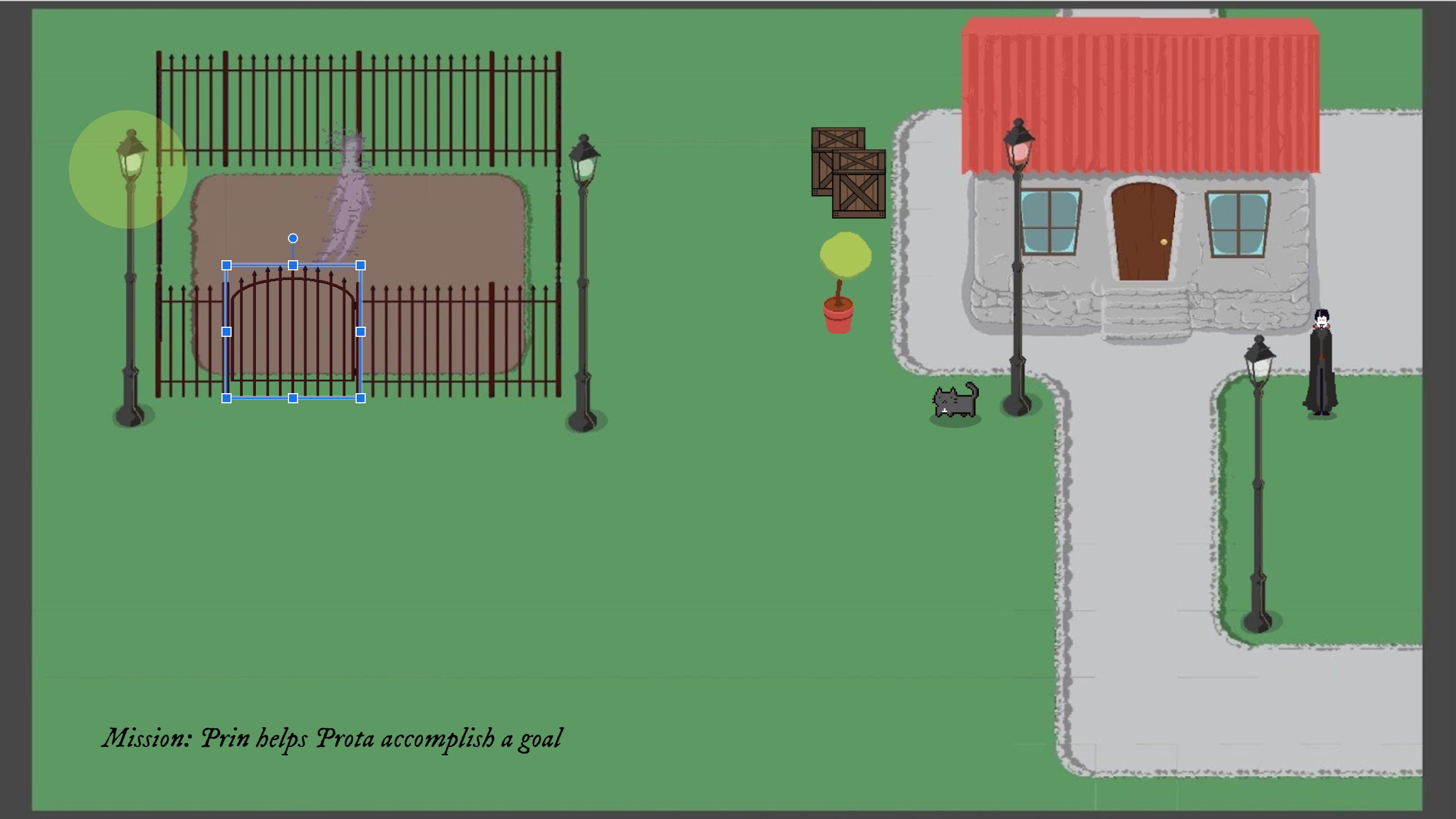
Art
Maps
The world that the story takes place in has variability of terrain in order to provide additional obstacles the players would be forced to overcome. Each region offers their own methods of communication, and their own challenges.
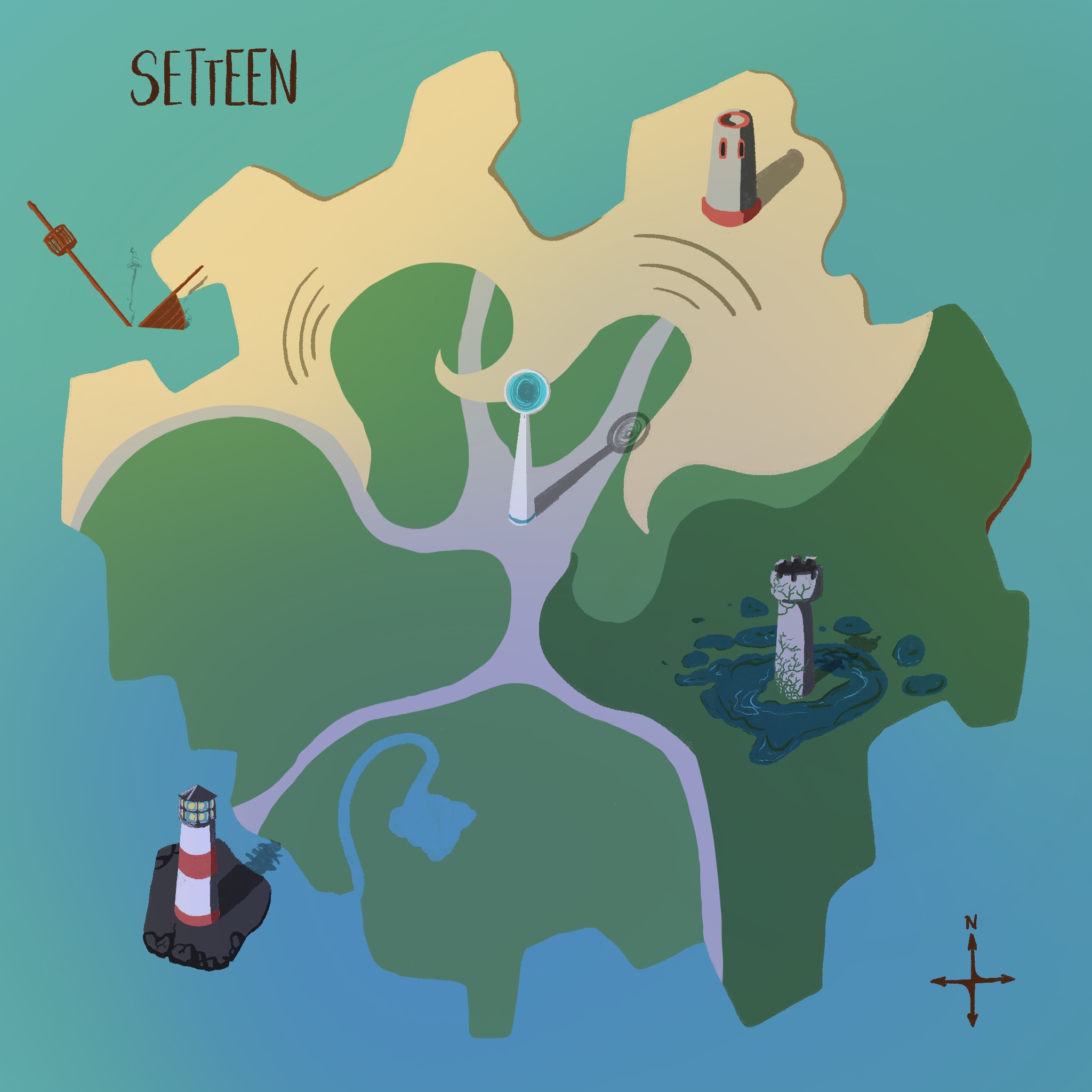
Since I wasn't trying to produce a full game right off the bat, I used maps as methods of communicating what the world would look like, and what sort of levels to expect in such a game. The style of these illustrations was meant to reflect their purpose, which was to be scratchpads for ideas of gameplay.

The Graveyard area was the zone I focused most on in my development. It was the area I iterated throughout testing and in the final sandbox. It has a thoroughly thought out back-and-forth between the two players, where each has their own task to accomplish, and requires the other to do it.

Characters
The design of the characters, and the game itself, was made with pixel art. I experimented with a few different styles, but decided that I'd like to harken back to older classics, as so many other games have done. Also because I found it quicker for myself to animate pixel art sprites than with line or vector drawings.
Prin and Prota
The two playable characters have very similar structures with complementary color schemes. Prin has a ripped dress, symbolic of the security of her past being torn asunder, and Prota's ghostly status is shown via a staticky texture, reminiscent of her ability to affect electric devices. In Unity, I also gave her a purple tint and transparency to further imply her ghostly nature.
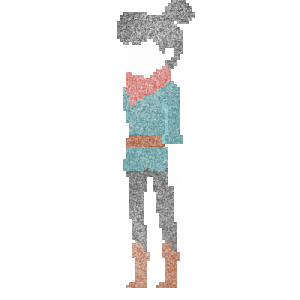

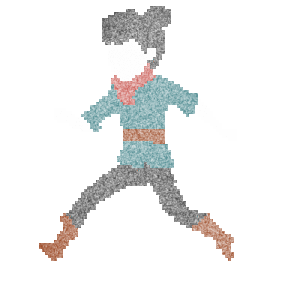
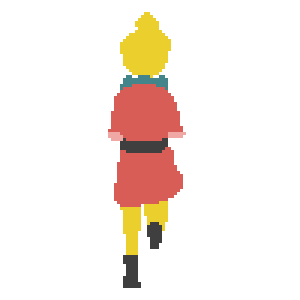
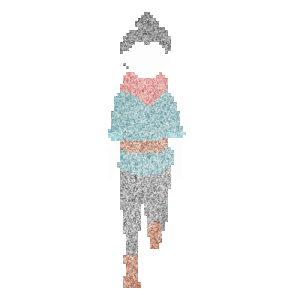
Other Spirits
Throughout the game, there will be other spirits that Prota will be able to see and interact with. The goblin, Gob, is one of the friendlier spirits, acting as a guide at first.There are also Malevolent Spirits that have been wandering this earth for far too long, and are a danger to both Prota and Prin. I designed these ghosties with explosive static in mind, making their figures humanoid, but distorted.

